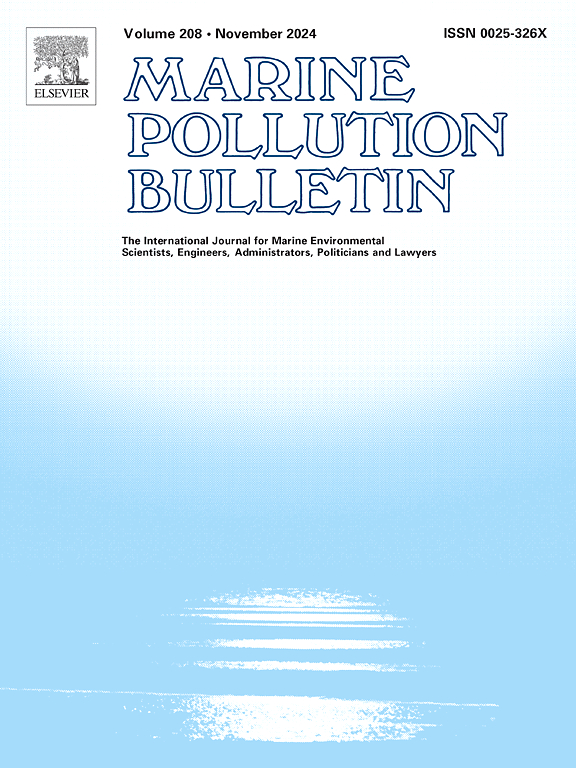来自法国贻贝观察项目的牡蛎中的铜同位素比率证实,防污涂料是阿卡孔湾铜的主要来源
IF 4.9
3区 环境科学与生态学
Q1 ENVIRONMENTAL SCIENCES
引用次数: 0
摘要
双壳类中铜稳定同位素的比值(65Cu/63Cu,表示为δ65Cu)为确定沿海人为来源提供了一种有前景的工具,但其可靠性仍不确定。本研究在四十年的时间里对长期受铜污染的阿卡孔湾三个站点的牡蛎样本中的Cu同位素进行了检测。近岸站点的铜浓度显著上升,近海站点的增加较小。δ65Cu值随着Cu水平的增加而增加,这与来自防污涂料的自然和人为Cu的二元混合一致。这一发现证实了防污涂料是当地主要的人为Cu来源,并表明Cu同位素是沿海环境中追踪这些化合物的有效工具。对其他区室的进一步研究和新同位素系统的整合可以更好地约束扩散的二次输入,如河流、大气和径流,并改进沿海地区(如Arcachon)的源分配。本文章由计算机程序翻译,如有差异,请以英文原文为准。

Copper isotope ratios in oysters from the French Mussel Watch program confirm antifouling paints as a major source of copper in Arcachon Bay
The ratio of copper stable isotopes (65Cu/63Cu, expressed as δ65Cu) in bivalves offers a promising tool to identify coastal anthropogenic sources, yet its reliability remains uncertain. This study examines Cu isotopes in oyster samples from the chronically Cu-contaminated Arcachon Bay across three stations over a four-decade period. Cu concentrations rose significantly at nearshore stations, with a smaller increase at the offshore site. δ65Cu values increased alongside Cu levels, consistent with a binary mixing between natural and anthropogenic Cu derived from antifouling paints. This finding confirms that antifouling paints are the major local anthropogenic source of Cu and demonstrates that Cu isotopes are an effective tool for tracking these compounds in coastal environments. Further investigation of additional compartments and the integration of new isotope systems can better constrain diffuse secondary inputs—such as riverine, atmospheric, and runoff—and refine source apportionment in coastal areas, like Arcachon.
求助全文
通过发布文献求助,成功后即可免费获取论文全文。
去求助
来源期刊

Marine pollution bulletin
环境科学-海洋与淡水生物学
CiteScore
10.20
自引率
15.50%
发文量
1077
审稿时长
68 days
期刊介绍:
Marine Pollution Bulletin is concerned with the rational use of maritime and marine resources in estuaries, the seas and oceans, as well as with documenting marine pollution and introducing new forms of measurement and analysis. A wide range of topics are discussed as news, comment, reviews and research reports, not only on effluent disposal and pollution control, but also on the management, economic aspects and protection of the marine environment in general.
 求助内容:
求助内容: 应助结果提醒方式:
应助结果提醒方式:


